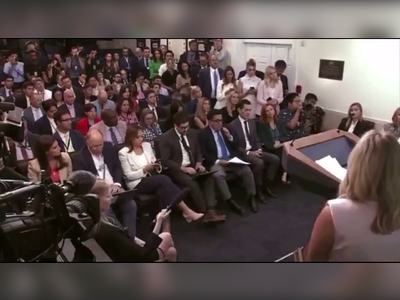Teen’s Arrest for Montezuma Murder Sheds Light on Youth Violence Crisis
The detention of a 16-year-old suspect raises urgent questions about rising adolescent crime rates in Costa Rica.
The arrest of a 16-year-old in connection with the murder of a 25-year-old man in Montezuma, Puntarenas, marks a troubling chapter in Costa Rica's ongoing struggle with youth involvement in violent crime.
This startling incident, which began with a barroom altercation on September 15, has now escalated into a complex criminal investigation, challenging societal assumptions about violence among the nation's youth.
The young suspect, apprehended by Puntarenas officers while traveling on a ferry, was reportedly armed at the time of the arrest.
According to the Ministry of Public Security, he has been placed under judicial custody, a procedural move as foreboding as it is necessary given the severity of the crime.
The violent altercation on the night of September 15 led to the tragic death of the victim, identified only by the surname Fernández, who was shot multiple times in the street following a dispute at a local bar.
Another individual was injured in the incident, emphasizing the brutal nature of the confrontation.
This case, while shocking, is part of a larger tapestry of rising youth crime in Costa Rica, a nation touted for its peaceful image yet increasingly grappling with the challenges of modern social dynamics.
It raises important questions about the societal factors contributing to such violence among young people and necessitates a deeper examination of both preventative measures and judicial handling of juvenile offenders.
With this arrest, authorities are prompted to investigate not only the immediate circumstances but also the underlying currents of influence that drive minors toward such drastic actions.
As the justice system takes its course, the nation watches closely, seeking both accountability and solutions in equal measure.
In what has become a litmus test for the handling of youth violence, this case underscores an urgent call to action for policy makers, educators, and community leaders.
Addressing these issues requires a coordinated effort, blending educational initiatives, social support systems, and robust legal frameworks to curb the troubling trend of youth involvement in crime.
As Costa Rica grapples with these pressing challenges, the conversation shifts to how to protect its younger generations from the allure of crime and how to offer effective rehabilitation in place of punishment.
This crisis, emblematic of broader societal strains, demands thoughtful intervention now more than ever.
This startling incident, which began with a barroom altercation on September 15, has now escalated into a complex criminal investigation, challenging societal assumptions about violence among the nation's youth.
The young suspect, apprehended by Puntarenas officers while traveling on a ferry, was reportedly armed at the time of the arrest.
According to the Ministry of Public Security, he has been placed under judicial custody, a procedural move as foreboding as it is necessary given the severity of the crime.
The violent altercation on the night of September 15 led to the tragic death of the victim, identified only by the surname Fernández, who was shot multiple times in the street following a dispute at a local bar.
Another individual was injured in the incident, emphasizing the brutal nature of the confrontation.
This case, while shocking, is part of a larger tapestry of rising youth crime in Costa Rica, a nation touted for its peaceful image yet increasingly grappling with the challenges of modern social dynamics.
It raises important questions about the societal factors contributing to such violence among young people and necessitates a deeper examination of both preventative measures and judicial handling of juvenile offenders.
With this arrest, authorities are prompted to investigate not only the immediate circumstances but also the underlying currents of influence that drive minors toward such drastic actions.
As the justice system takes its course, the nation watches closely, seeking both accountability and solutions in equal measure.
In what has become a litmus test for the handling of youth violence, this case underscores an urgent call to action for policy makers, educators, and community leaders.
Addressing these issues requires a coordinated effort, blending educational initiatives, social support systems, and robust legal frameworks to curb the troubling trend of youth involvement in crime.
As Costa Rica grapples with these pressing challenges, the conversation shifts to how to protect its younger generations from the allure of crime and how to offer effective rehabilitation in place of punishment.
This crisis, emblematic of broader societal strains, demands thoughtful intervention now more than ever.








